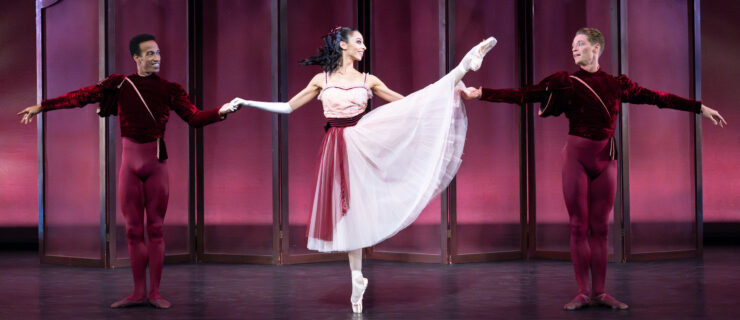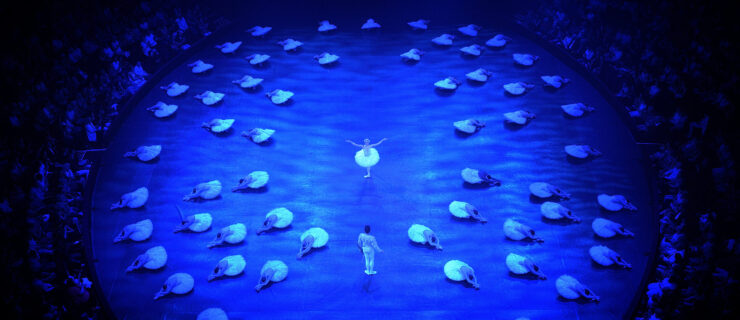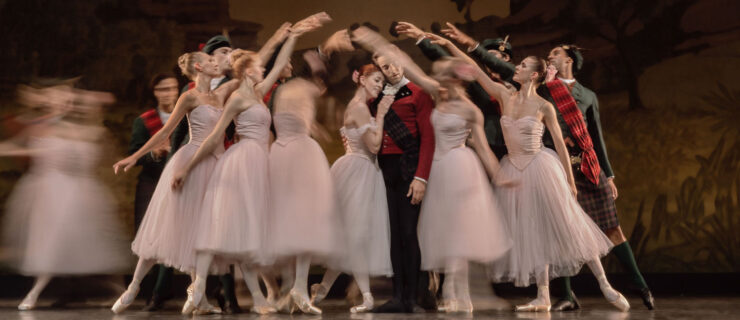Corps Stars
Last spring, as American Ballet Theatre began rehearsals for its Metropolitan Opera House run of La Bayadère, someone important was missing.
All the Nikiyas and Gamzattis were in the studio; no Solor or Bronze Idol was unaccounted for. But Marian Butler, a member of the corps de ballet since 1995, was out with an injury—a loss that ballet mistress Susan Jones felt deeply. “I remember thinking, ‘Oh my gosh, how are we going to do this without Marian?’ ” Jones says. “I needed her. She knows the ballet inside and out, so she’s a huge support system for me. And her work ethic, her calm demeanor—she’s an example for the other girls. It didn’t seem like Bayadère without Marian.”
Most aspiring ballerinas think of the corps de ballet as a place best escaped as quickly as possible, a stepping-stone on the way to better, more glamorous roles. But many—indeed, the majority of professional ballet dancers—have found rich, long, fulfilling careers in the corps. These senior corps artists are the heart and soul of the ballet company. They have an encyclopedic knowledge of the classics, and they’ve earned the respect of their colleagues. Night after night, they make ballets happen.
It’s true that few of these dancers expected to end up as corps veterans. “I don’t think any little girl starts out thinking, ‘I want to be a corps dancer!’ ” says Kylee Kitchens, a member of Pacific Northwest Ballet since 2000. “I definitely heard people talk about dancers ‘rotting in the corps’ when I was training,” agrees Mariellen Olson, who joined San Francisco Ballet eight seasons ago.
But experienced corps members understand that the corps of an international ballet company can be a rewarding place. They’ve chosen to be there: Most could be dancing larger roles in smaller troupes. “New York City Ballet was always where I wanted to end up,” says Gwyneth Muller, who joined the company’s corps in 2000. “Yes, I could dance bigger parts elsewhere, but I wouldn’t get to do NYCB’s fantastic repertoire. This is such an exciting place! Even if I’m not dancing the lead in a Balanchine ballet, I feel like I’m doing something important by participating in a great piece of art that’s affecting people.”
Since most of today’s ballet companies present a wide range of work, corps members have many opportunities to develop their artistry. Contemporary pieces, in particular, tend to give the corps a chance to shine. “Unless we’re doing a big old classic, a Swan Lake, we’re not just standing there, waving our arms,” Muller says. “I’m constantly learning ballets that involve real dancing, and because the company commissions a lot of new work, my rep is always expanding.” Olson notes that even one of the most over-performed classical warhorses—The Nutcracker—can be a gold mine for corps members, who are likely to find themselves dancing the occasional marzipan shepherdess or ballerina doll in addition to their usual duties as flowers and snowflakes.
Some arm-waving is unavoidable, of course. But dancing as a Wili in 10 straight performances of Giselle isn’t necessarily a nightmare. “The principals only get one or two shots, but since we do the classics many times, we get to expand our interpretations of the character and play with different things,” Kitchens says. “I’ll think about my port de bras one night, the placement of my head the next.” If, after the umpteenth show, they begin to feel restless or bored—and all admit that they sometimes do—they think about the bigger picture. “I remind the corps girls that, as artists, they bring the same level of contribution to the performance as Odette or Giselle,” Jones points out. “There’s something uniquely beautiful about the corps ‘dressing the stage’ for the principals,” Butler says. “It’s a tradition. I think about that a lot when I’m frustrated: Without me, without us, the ballet isn’t complete.”
Without the senior corps members, the company isn’t complete, either. As Jones knows, veteran corps dancers often provide assistance to the ballet mistress in rehearsal. “They’re my security blanket,” says Jones, who herself danced in ABT’s corps for almost nine years. “I remember the 1970-something version of a ballet; they remember the littlest details of all the changes made since then, which I lose track of. It’s in their bodies.” They also help new corps members, who often receive little coaching and yet must quickly familiarize themselves with the classical repertoire. Many senior corps women even consider themselves mentors to greener dancers. “I let the new dancers know that I’m there if they have any questions about choreography—or about how to survive the weeks of performing,” Butler says. “We take it upon ourselves to make sure they feel comfortable with the steps and the style,” Olson says. “In the end, we all have to fly together.”
That sense of camaraderie extends to life offstage. It can get lonely at the top of a ballet company, but corps members can rely on each other. “When things get tough, we can commiserate: ‘Ugh, not another Swan,’ or ‘Oh man, my feet hurt too!’ ” Olson says. And hundreds of shared hours in rehearsal studios and dressing rooms foster deep, lifelong friendships. “I’ve grown up with these girls,” Kitchens says. “We’ve had amazing experiences together. They’re my family here in Seattle.”
Ultimately, senior corps dancers find joy in the fact that they are living that little-girl dream. “We started dancing because we wanted to perform,” Muller says. “Being onstage is a privilege, and we have more stage time than anyone else.”
“That thrill that you get when the lights go down before a show, the breeze you feel as the curtain comes up—at that moment, I’m not thinking about my rank or my role,” Kitchens says. “I’m just thinking, ‘I’m up here! Dancing!’ ”





